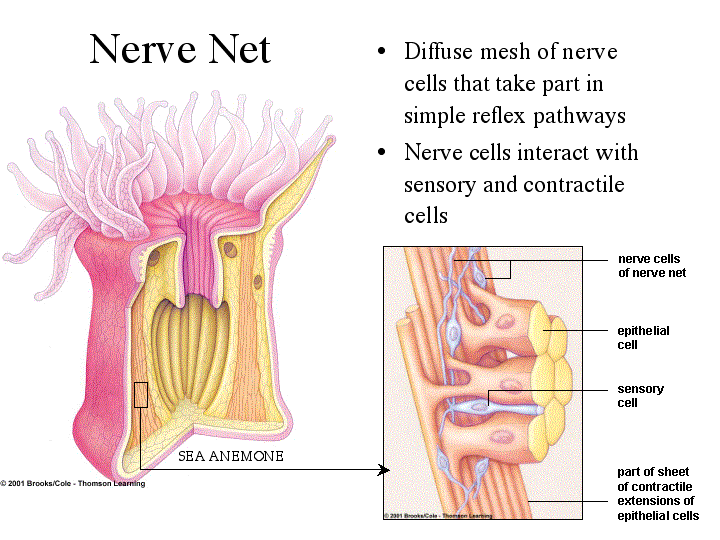

The more complex the life-style of an animal, the more elaborate are its modes of receiving, integrating, and responding to information in the external and internal worlds.
A network of sensory cells, nerve cells, and contractile epithelial cells makes up the nerve net in the radially symmetrical cnidarians. Reflex pathways result in simple, stereotyped movements that provide the basic operating machinery of nervous systems such as the nerve net.
Bilateral nervous systems may have evolved from nerve nets. Most bilateral animals have local nerve nets in some parts of the body. The bilateral planula larva of some Cnidarians resembles a flatworm.
Flatworms are the simplest animals with bilateral symmetry, which is reflected in their arrangement of muscles and nerves. The nervous system includes two longitudinal nerve cords, associated ganglia, and nerves. Some flatworms have a small brainlike clump of nervous tissue at the head end of the nerve cords (an example of cephalization). Perhaps this arrangement evolved from the nerve net of cnidarian planula larvae.
Cephalization is the evolutionary result of the layering of more and more nervous tissue over reflex pathways of ancient origin.
Earliest fishlike vertebrates had a hollow, tubular nerve cord. Modification and expansion of the nerve cord produced the spinal cord and brain. The nerve cord persists in vertebrate embryos as a neural tube.
As vertebrate evolution proceeded, simple reflex pathways yielded to more complex pathways with expanded brain capacity.
The oldest parts of the vertebrate brain still deal with reflex coordination (brain stem), but in the newer brain regions interneurons receive, store, and retrieve information all the while weighing possible responses. The neural tube persists in all vertebrate embryos, undergoing expansion to form the brain and spinal cord along with associated nerves.
The central nervous system includes the brain and spinal cord. The peripheral nervous system includes all of the nerves carrying signals to and from the brain and spinal cord.
This animation (Audio - Important) describes the divisions of the nervous system.